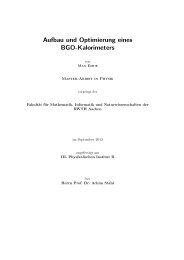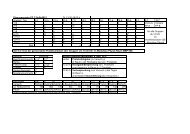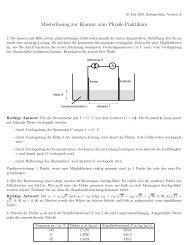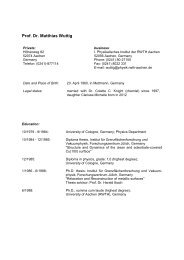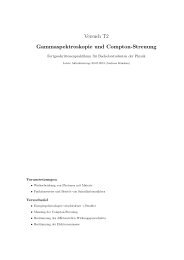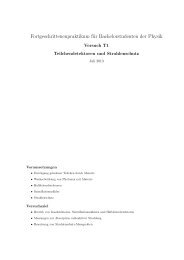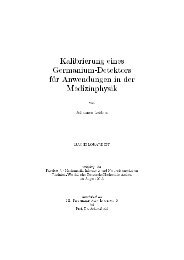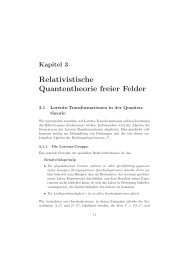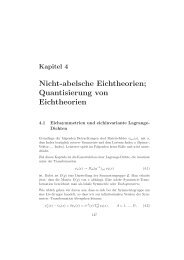Workshop book - Physikzentrum der RWTH Aachen - RWTH Aachen ...
Workshop book - Physikzentrum der RWTH Aachen - RWTH Aachen ...
Workshop book - Physikzentrum der RWTH Aachen - RWTH Aachen ...
Create successful ePaper yourself
Turn your PDF publications into a flip-book with our unique Google optimized e-Paper software.
Talks Monday February 4<br />
Transport through individual magnetic molecules<br />
Herre van <strong>der</strong> Zant, Kavli Institute of Nanoscience Delft, The Netherlands<br />
By merging the fields of molecular magnetism, molecular electronics and<br />
nanotechnology, we fabricate planar three-terminal nanodevices containing<br />
individual magnetic molecules or nanoparticles. Source and drain electrodes<br />
are made of Au or of (multi-layered) graphene. A third gate electrode allows<br />
the modification of charge transport independently from the source/drain<br />
electrodes. In this way, a spin transistor is built in which the electric current<br />
through the individual magnetic molecule or nanoparticle is sensitive to its<br />
spin properties. The molecular complexes of interest are single-molecule magnets<br />
(SMMs) and spin-crossover compounds. Coulomb blockade is generally<br />
observed but finer details such as Kondo correlations and excited states are<br />
observed at cryogenic temperatures [1]. In a Fe-4 SMM based transistor, we<br />
observe features that confirm the high-spin state and find Kondo behavior,<br />
spin blockade and a zero-field splitting that depends on the redox state; in<br />
the charged state the molecule turns out to be a better magnet. Using an<br />
in-situ sample rotator, direct observation of magnetic anisotropy has been<br />
demonstrated [3]. Recent progress includes transport through a single spincrossover<br />
molecule [4] and the fabrication of a molecular memory device based<br />
on a spin-crossover nanoparticle that operates near room temperature [5].<br />
Interestingly for molecular spintronics, the spin crossover in these devices<br />
can be induced by applying a voltage, showing that its magnetic state is<br />
controllable electrically.<br />
Work supported by FOM and through the EU FP7 program (ELFOS)<br />
[1] H.B. Heersche et al., Rev. Lett. 96 (2006) 206801; E.A. Osorio et al.,<br />
Nano Letters 10 (2010) 105; J.M. Thijssen and H.S.J. van <strong>der</strong> Zant, Phys.<br />
stat. sol. (b) 245 (2008) 1455-1470.<br />
[2] A. Zyazin et al. Nano Letters 10 (2010) 3307.<br />
[3] E. Burzurí, A.S. Zyazin, A. Cornia and H.S.J. van <strong>der</strong> Zant, Phys. Rev.<br />
Lett. 109 (2012) 147203.<br />
[4] V. Meded et al., Phys. Rev. B 83 (2011) 245115.<br />
[5] F. Prins et al. Adv. Mat. 23 (2011) 1545.<br />
12





